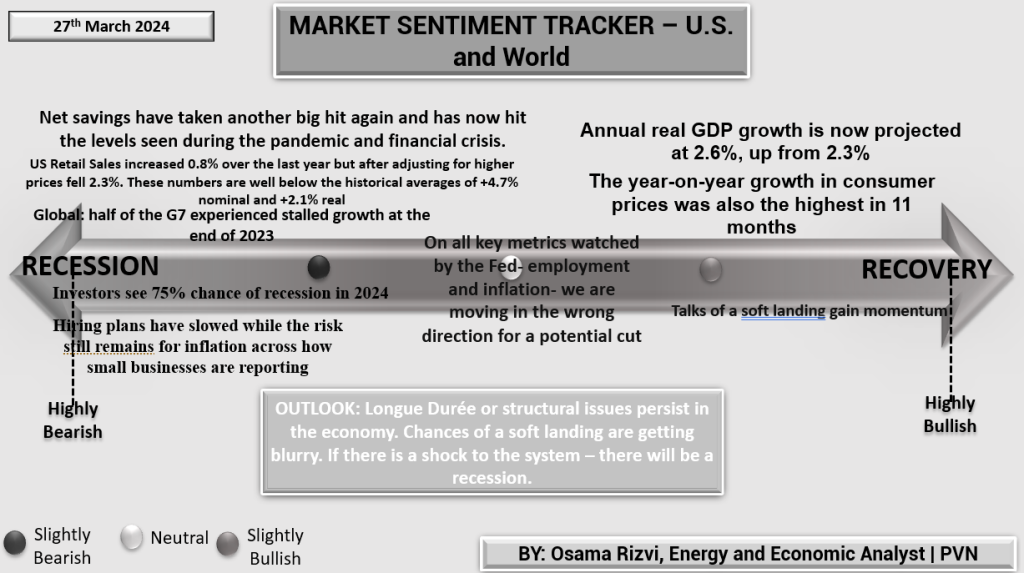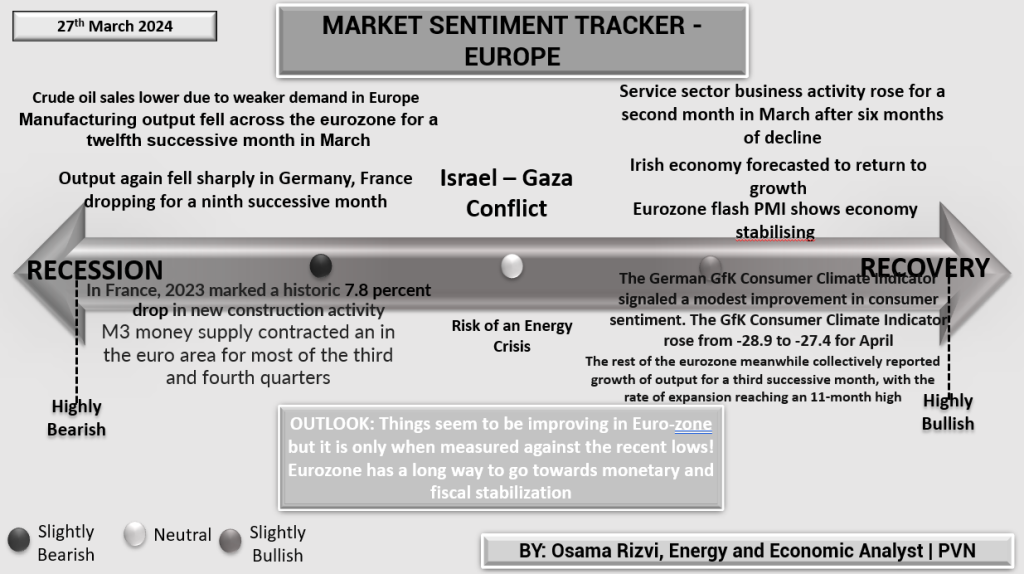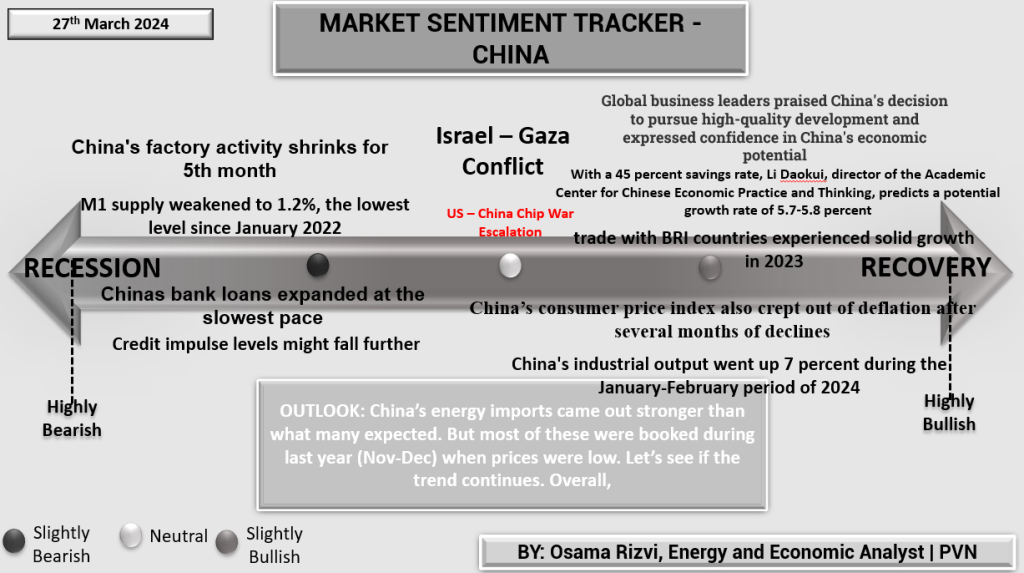As we dissect the market sentiment across three major economic territories, the picture is nuanced with both caution and optimism. In the United States, despite a headwind of potential inflationary pressures and a cautious Federal Reserve stance, there is a silver lining with projected annual real GDP growth edging up from 2.3% to 2.6%. The housing market shows vigor, and yet, net savings rates have dipped, raising eyebrows about future consumption patterns.

Europe presents a checkerboard of economic conditions. While manufacturing struggles with a year-long decline, the services sector is picking up, indicating an uneven path to recovery. Germany, in particular, is showcasing resilience, with the GfK Consumer Climate Indicator reflecting an uptick in consumer sentiment. France, however, grapples with a protracted slump in new construction, a sector critical for domestic growth.

China’s scenario is equally complex. The enduring shrinkage in factory activity for five consecutive months signals ongoing industrial stress. Nevertheless, there’s a robustness in the energy sector and a promising 5% year-over-year retail sales increase, suggesting consumer spending is still afloat. The juxtaposition of slowest bank loan expansions against stronger energy import signals indicates a balancing act between domestic credit tightening and international trade engagement.

In sum, these economic giants navigate through their unique challenges and opportunities, with market sentiments providing vital clues to their health. As analysts, we remain watchful of these indicators for a clearer understanding of the global economic trajectory.











